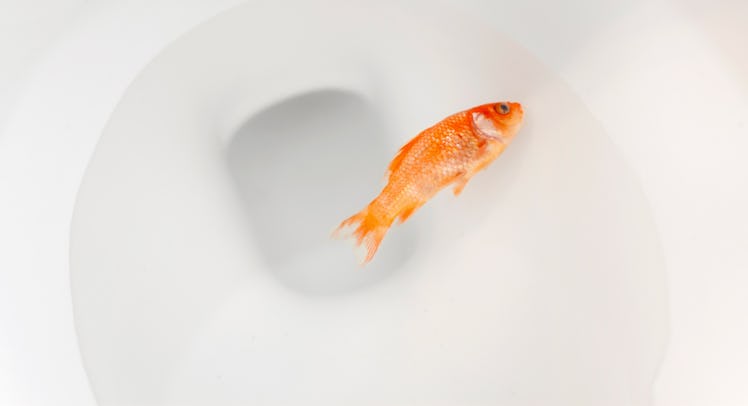How to Prepare Your Kid for the Death of a Pet
Preparing for the loss of a dog, cat, or fish requires an honest conversation about the inevitable.

When a pet nears the end of their life, death sneaks into the family home on soft paws. Children get glimpses of mortality as parents struggle to explain why the inevitable is so inevitable. Dogs end up going to a farm upstate when panicked parents, probably in mourning, decide not to have a difficult conversation. But glossing over the truth of a pet mortality does children a disservice. It’s better to prepare them. It’s better that they know.
Telling a kid apropos of nothing that Fluffy is going to kick the bucket doesn’t help anyone, which is why therapist Brenda Brown, founder of Grief About Pets, suggests that parents look for teachable moments. After all, she explains, we live in an environment where things die all the time—like bugs, critters and plants. “It starts with nature,” she explains. “They’re already seeing death everywhere.” She suggests calling attention to all that death rather than ignoring it. She says that nature documentaries can be a great tool for this because they often feature predator/prey relationships. They’re disturbing but natural. Kids can see that.
“We realize every child’s cognitive abilities are different so you’ll know when they’re ready, but typically they’ll be able to understand death at age three,” explains Brown. “Just begin with, ‘Oh, no. It looks like that animal died. What do you think happened?’”
Questions are key because parents aren’t going to be able to effectively guess what kids think about death. The idea is so clear in adult minds that they can’t imagine how fuzzy it is to kids. Brown notes that when questions go the other way, honesty and openness is always the best policy. So is simplicity. There’s no need to overdo explanations with unnecessary details about biological processes. Still, it’s important to stress the permanence of death and that it’s not like other experiences. It is final.
“Make sure you never use the phrase ‘going to sleep,’” says Brown. “We’ve learned that will cause kids to be terrified of going to bed at night.”
These conversations help kids orient themselves to mortality be it pet or human, but not necessarily to the specific instance of their pet passing away. That issue becomes a bit more pressing when a family pet is ailing or simply old and reaching the end of their life. That’s when kids and adults might start experiencing what’s known as anticipatory grief.
The Four-Pronged Approach to Prepping for a Pet’s Death
- Explore grief emotions prior to a pet’s death, not after, to normalize the feelings and model appropriate responses.
- Ask questions about a child’s thoughts on death, because their understanding is likely much different than yours.
- Look for teachable moments in nature, like predator/prey relationships often featured in documentaries.
- Avoid overdoing explanations with unnecessary details about biological processes. But don’t oversimplify death by using phrases like “going to sleep.”
Kids who have cared for the pet or spent a great deal of time with the pet will have a deeper experience of grief. But parents shouldn’t expect children to grieve the same way that adults do. In fact, children generally just have four stages of grief that they can verbalize: sadness, anger and fear, even against a baseline of happiness.
Brown suggests that parents explore those grief emotions prior to a pet’s death. A parent can simply ask their kid what they think they will feel upon a pet’s death while sharing times when they have felt anger, fear or sadness around death. It’s a conversation that normalizes the grief and allows parents to model appropriate responses to the emotions.